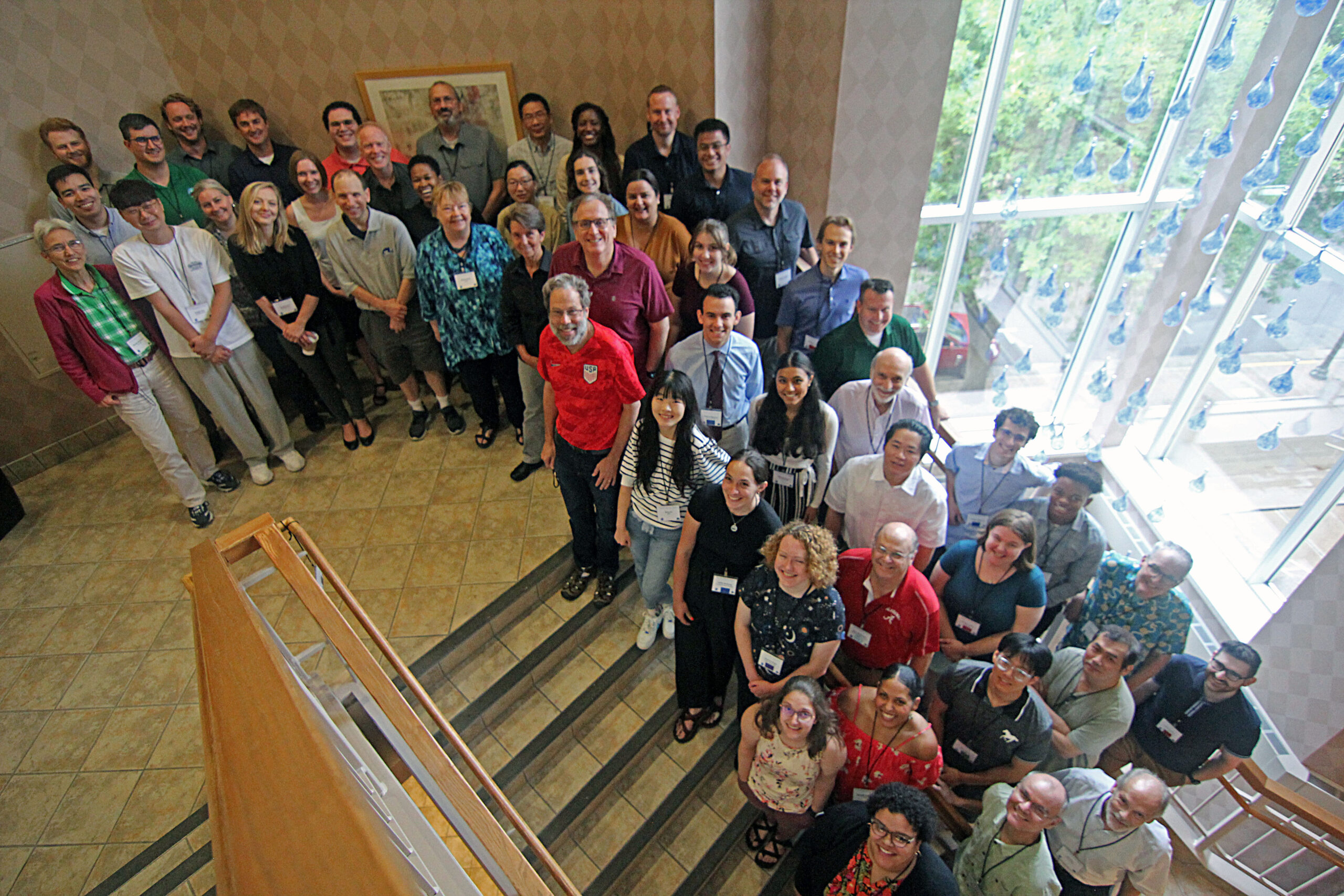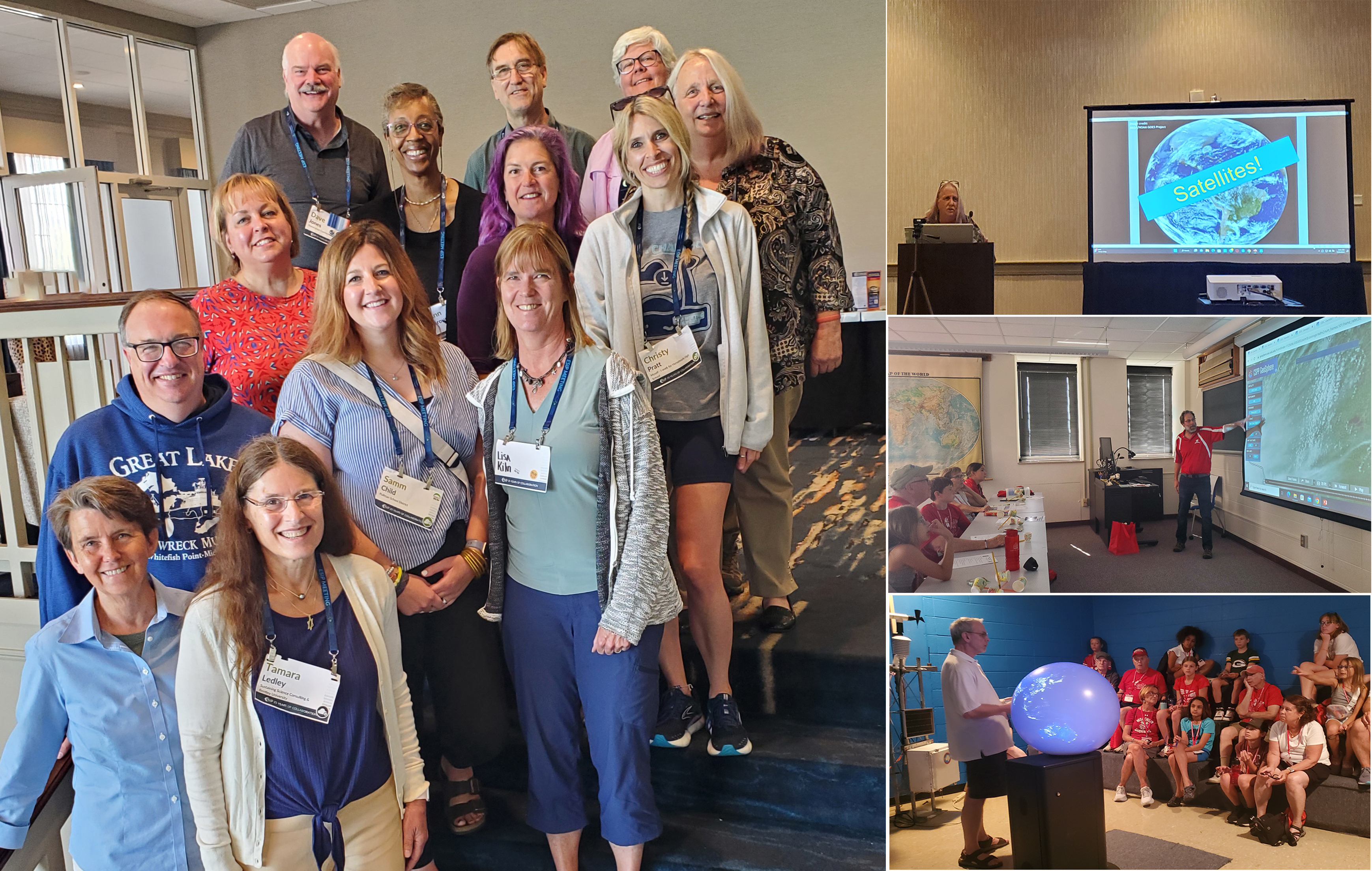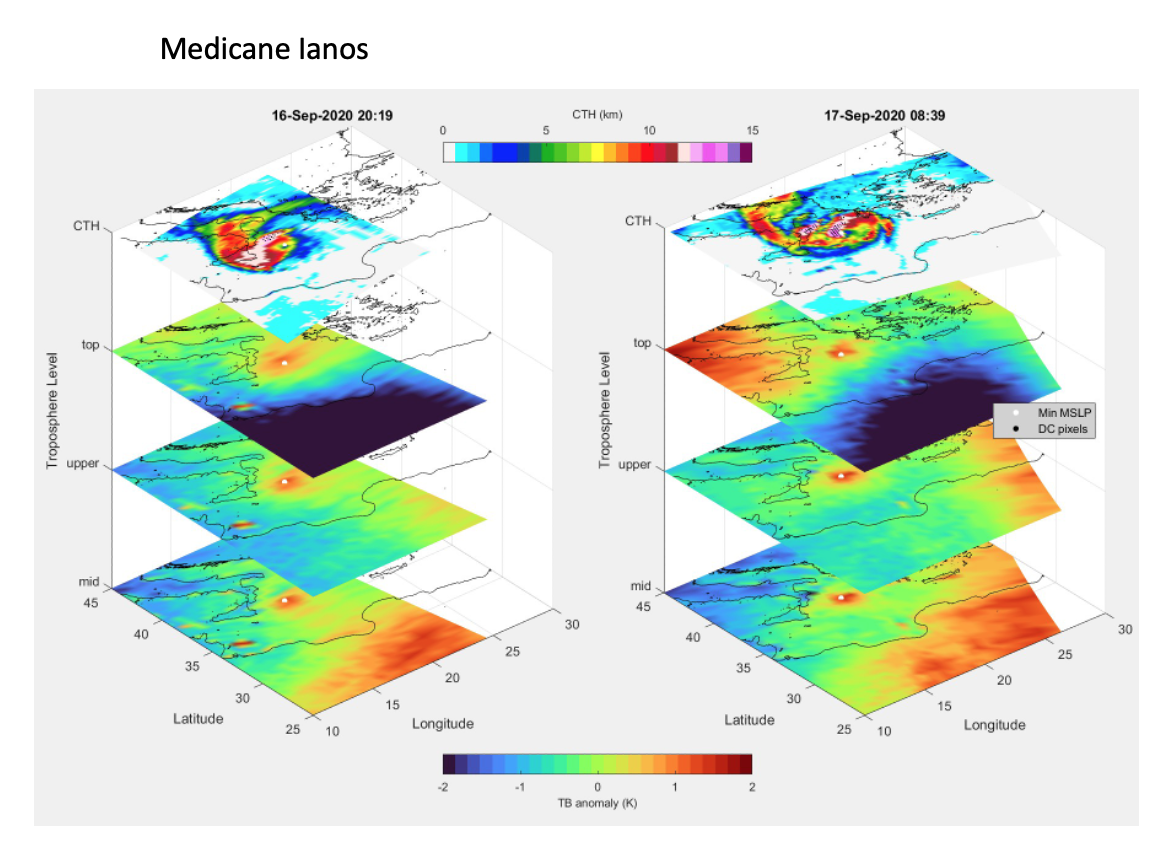
[ Archive ]

 |
CIMSS-NOAA Weekly Report [ Archive ] |
 |
CIMSS AND ASPB WEEKLY HIGHLIGHTS FOR THE WEEK ENDING JULY 28, 2023
DATA, INFORMATION, AND USE-INSPIRED SCIENCE:
FUTURE OUTLOOK:
AWARDS AND RECOGNITION:
TRAVEL AND MEETINGS:
CIMSS Hosts 2023 Annual CoRP Symposium: The 2023 Cooperative Research Program Symposium was held 25-27 July 2023 at the University of Wisconsin—Madison, hosted by the Cooperative Institute for Meteorological Satellite Studies. In attendance were the locally stationed NOAA/NESDIS/STAR/ASPB branch scientist and externally stationed NOAA scientists, including Dr. Paul DiGiacomo, Dr. Alisa Young, Dr. Dan Lindsey, Dr. Jordan Gerth and Dr. Satya Kalluri. The theme for this year's symposium was "An Evolving NOAA Science Community to Benefit Society". Sixty students, researchers, and professors from the NESDIS Center for Satellite Applications and Research (STAR) cooperative institutes (CIMSS, CIRA, CISESS, and CESSRST) met to network and share research results among students and recent graduates. The two and a half day symposium also featured panel discussions that provided early career scientists with guidance on career paths and the professional skills required to be successful within the realm of research and engineering. Undergraduate and graduate students along with postdocs presented twelve oral research overviews and six posters. Most outstanding and honorary mention awards were presented to Kyle Obremski (CIMSS), Kyle Hilburn (CIRA), Ashmita Pyne (CISESS), and Jack Tobin (CIRA). New collaborations were cultivated by continuing discussions on walking tours of the UW-Madison campus lakeshore walking path, a visit to the state capital, and a tour of SSEC/CIMSS at UW-Madison. (W. Feltz, CIMSS, 608-262-6283, wayne.feltz@ssec.wisc.edu; T. L’Ecuyer, CIMSS, 608-890-2107, tlecuyer@wisc.edu)
 (Click image to enlarge)
(Click image to enlarge)
Figure: CIMSS-NOAA July 25-27, 2023 Annual CoRP Symposium Attendees Madison, Wisconsin.
TRAINING AND EDUCATION:
Sharing Satellite Resources: NOAA's Cooperative Institute for Meteorological Satellite Studies (CIMSS) promoted satellite imagery and resources at the Earth Science Information Partners (ESIP) Teacher Workshop in Vermont on July 19-20 and at Grandparents University (GPU) at the University of Wisconsin-Madison July 24-25. NOAA has supported teacher participation at the ESIP summer meeting since 2008. This year Margaret Mooney from CIMSS co-presented the NOAA Satellites Virtual Science Fair at ESIP and NOAA's Tim Schmit shared satellite information and imagery with UW alumni and their grandchildren at GPU in Madison. (M. Mooney, CIMSS, margaretemooney@ssec.wisc.edu, T. Schmit, E/RA2)
 (Click image to enlarge)
(Click image to enlarge)
Figure: Scenes from ESIP and GPU.
MEDIA INTERACTIONS AND REQUESTS:
SOCIAL MEDIA AND BLOG Posts:
SSEC and CIMSS Scientists in the news: Scientists at the University of Wisconsin-Madison (UW) Space Science and Engineering Center (SSEC) and the Cooperative Institute for Meteorological Satellite Studies (CIMSS) provide expert interviews, imagery and case studies to promote science. This week: 1) CIMSS scientist Jason Otkin gave a 30 minute interview with radio station WORT 8 O'Clock Morning Buzz on refent drought conditions across Wisconsin and the impacts of climate change on flash drought development (https://www.wortfm.org/flash-droughts-becoming-common-under-climate-change/) 2) At the request of the National Weather Service forecast office in Cleveland, Oho, Scott Bachmeier provided animations of Geostationary Operational Environmental Satellite (GOES)-12 Visible and Infrared imagery for their Storymap commemorating a flash flooding event in July 2003 (https://storymaps.arcgis.com/stories/6d824a578aff4e0e85a227a2c6389fc7) 3) CIMSS Satellite Blog contributors Scott Lindstrom and Scott Bachmeier published these case studies: "Near-simultaneous SAR observations over Typhoon Doksuri" (July 26), "Thunderstorms across Interior Alaska" (July 24), "Assessing the future of a tropical invest" (July 24), "LIS Observations over the Western Pacific Ocean near Typhoon Doksuri" (July 24), "Eruption of Mount Shishaldin" (July 23) "Don meanders around the North Atlantic" (July 23), "Pyrocumulonimbus clouds in the Northwest Territories" (July 21), "SAR winds over the Alenuihaha channel on 20 July 2023" (July 20). Read more at the CIMSS Satellite Blog: https://cimss.ssec.wisc.edu/satellite-blog/. (S. Lindstrom, CIMSS, S. Bachmeier, CIMSS, E. Verbeten, SSEC)
 (Click image to enlarge)
(Click image to enlarge)
Figure: A longer animation of GOES-18 SO2 RGB images shows the distinct SO2 signature (brighter shades of yellow) from the Shishaldin eruption, as it rotated counterclockwise within the circulation of a slow-moving middle tropospheric low in the Bering Sea.
PUBLICATIONS:
OTHER:
CIMSS Hosts Visiting Scientist from Italy to Study Medicanes: Derrick Herndon from the Cooperative Institute for Meteorological Satellite Studies (CIMSS) hosted visiting scientist Dr. Giulia Panegrossi from the Institute of Atmospheric Sciences and Climate (ISAC Italy) Jul 20 -Jul 28, 2023 as part of a project funded by the European Cooperation in Science and Technology (COST). The primary goal of this visit was to leverage the knowledge and experience of CIMSS personnel regarding Passive Microwave Radiometer (PMW) applications for assessing the intensity and structure of tropical cyclones (TCs) with a focus on applying these techniques to tropical cyclone-like systems known as Medicanes. A recent study by Panegrossi et al. (2023) compared selected Medicane cases which occurred between 2014 and 2020 to a larger dataset of documented Medicanes that occurred since 2000. Specific tasks for the visit included:
One result of this work is a better understanding of which cyclones exhibit sufficient tropical-like structure (warm core) to classify them as Medicanes and which cyclones do not. This will help improve forecasting and communication of threats within the Mediterranean basin. (D. Herndon, CIMSS, 608-262-6741)
 (Click image to enlarge)
(Click image to enlarge)
Figure: The warm core structure of Medicane Ianos in 2020 from AMSU-A along with cloud tops heights (CTHs). Temperature data was corrected using a hydrometeor scattering correction algorithm developed at CIMSS that better depicts the warm anomalies associated with tropical cyclones.
| Archived Weeklies Page | Submit a report item |